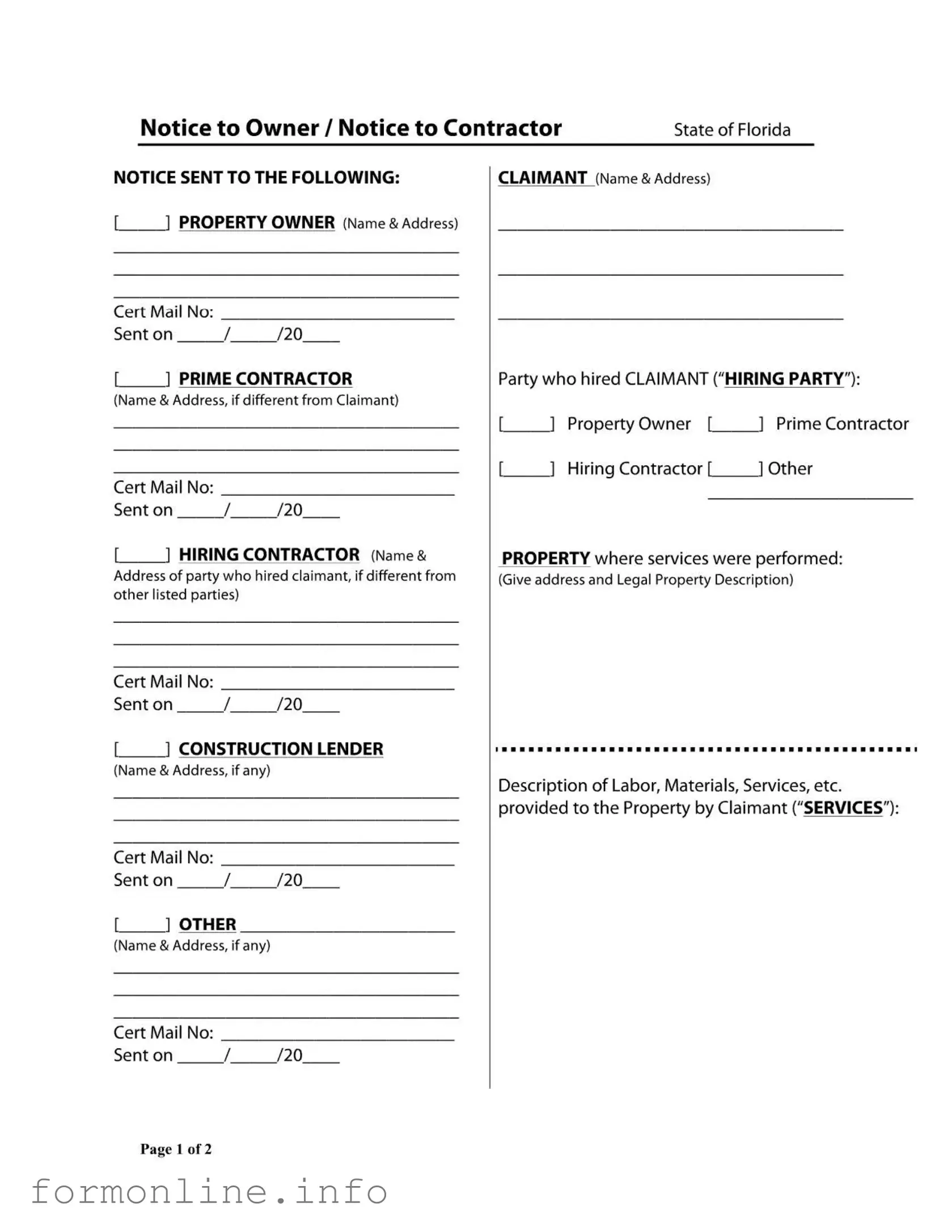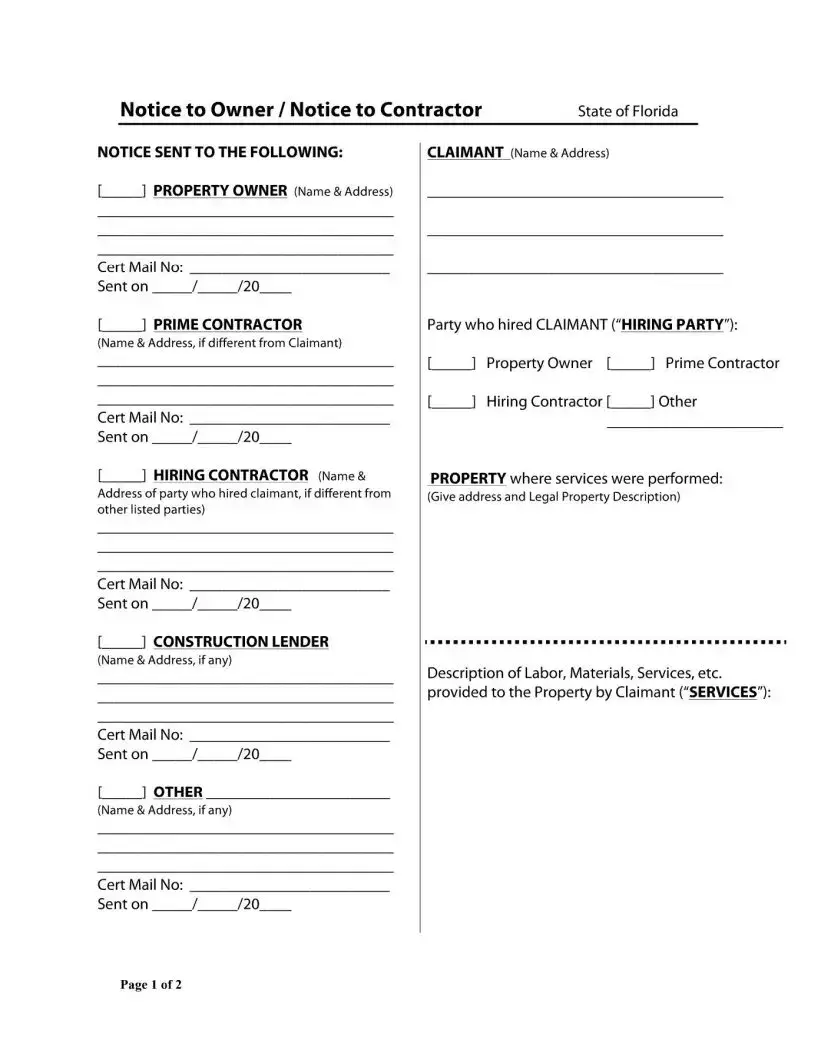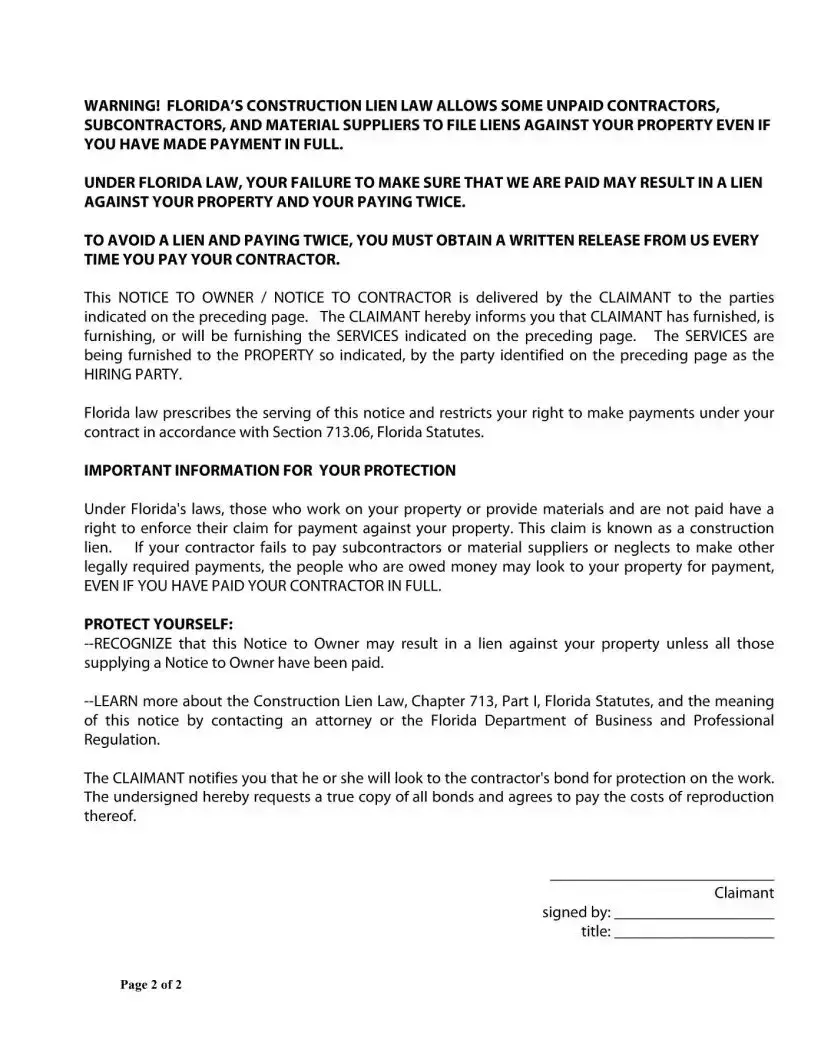The Notice to Owner form in Florida shares similarities with the Preliminary Notice form used in many states. Both documents serve as a notification to property owners about the involvement of contractors or subcontractors in a construction project. The intent is to inform property owners that they may be held liable for unpaid bills, even if they have paid their primary contractor. This proactive communication helps protect the rights of those providing labor or materials.
Another document comparable to the Notice to Owner is the Mechanic's Lien Notice. This notice is filed by contractors or subcontractors when they have not received payment for their work. Like the Notice to Owner, it alerts property owners about potential liens against their property. The Mechanic's Lien Notice underscores the importance of ensuring that all parties involved in the project are compensated to avoid legal complications.
The Construction Lien Waiver is also similar to the Notice to Owner. This document is used when a contractor or subcontractor waives their right to file a lien against a property for a specific payment. While the Notice to Owner warns property owners about the possibility of a lien, the Lien Waiver confirms that payment has been received and that the contractor will not pursue a lien. This creates a layer of protection for the property owner, ensuring they are not held liable for unpaid debts.
The Notice of Intent to Lien is another related document. This notice is sent before filing a lien and serves as a final warning to property owners about outstanding payments. Similar to the Notice to Owner, it informs property owners of their financial obligations and the consequences of failing to pay. The Notice of Intent to Lien is often seen as a last resort for contractors seeking payment.
The Affidavit of Payment is also comparable to the Notice to Owner. This document is used to confirm that all subcontractors and suppliers have been paid for their work. By providing an Affidavit of Payment, contractors assure property owners that they are not at risk of a lien being placed on their property. This document helps create trust between the contractor and the property owner.
The Notice of Commencement is another document that shares similarities with the Notice to Owner. This notice is filed at the start of a construction project and informs all parties involved that work is beginning. Like the Notice to Owner, it serves to protect the rights of contractors and subcontractors by ensuring that property owners are aware of the ongoing project and its potential financial implications.
Understanding the various documents in construction and property transactions is essential for maintaining clear communication and legal compliance. An important form to consider is the Mobile Home Bill of Sale, which legally facilitates the transfer of ownership of a mobile home, highlighting essential details similar to other notices in the construction realm. Just as the Notice to Owner protects the rights of contractors and suppliers, the Mobile Home Bill of Sale ensures a transparent exchange between the buyer and seller, safeguarding the interests of all parties involved.
The Certificate of Payment is also akin to the Notice to Owner. This document is issued when a contractor has completed a stage of work and requests payment. Similar to the Notice to Owner, it emphasizes the importance of timely payments to avoid disputes and potential liens. It acts as a reminder for property owners to fulfill their financial obligations.
The Final Notice of Lien is another document that parallels the Notice to Owner. This notice is sent after a lien has been filed, reminding property owners of their obligations and the potential consequences of unpaid debts. It serves to reinforce the message of the Notice to Owner, emphasizing the importance of ensuring all parties are paid to avoid legal action.
Lastly, the Claim of Lien is similar to the Notice to Owner in that it formally establishes a contractor's right to seek payment through a lien. This document is filed with the county clerk and provides legal notice to property owners about outstanding debts. Like the Notice to Owner, it highlights the risks associated with non-payment and the potential impact on the property.


